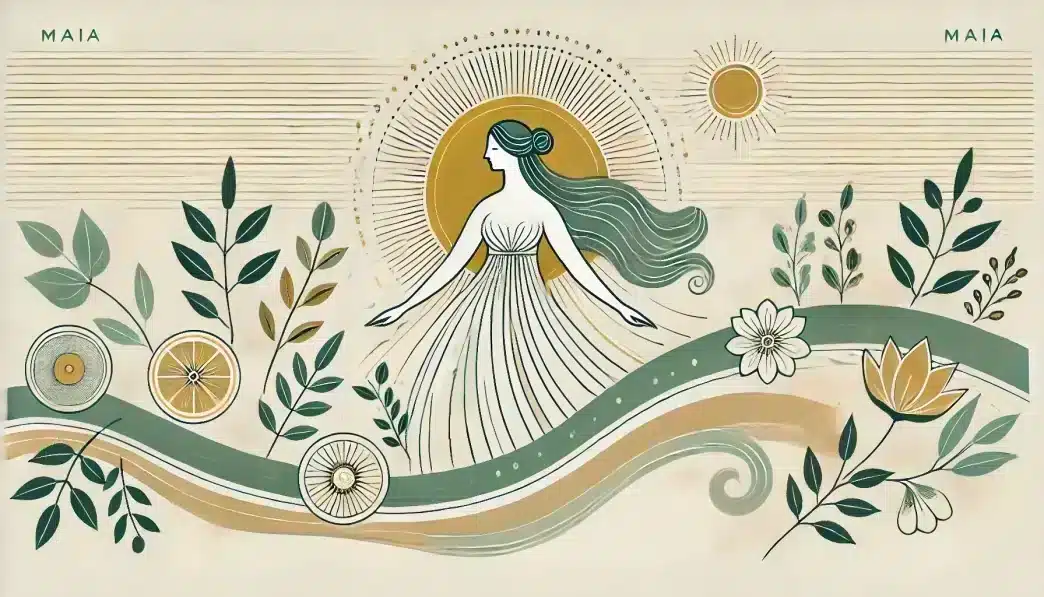Maia, in Roman mythology, is a goddess associated with growth, fertility, and the spring season. Her name is believed to be the origin of the month of May (Maius in Latin), during which she was particularly venerated.
Name: Maia
Role: Goddess of growth and fertility
Mythology: Roman
Domain: Growth, fertility, and spring
Greek Equivalent: Maia, one of the Pleiades and mother of Hermes
Origin and Background
In Roman religion, Maia was revered as a goddess who personified the vital forces of nature, particularly those related to the growth of plants and the renewal of life in spring. She was often associated with the earth and its nurturing qualities, embodying the concept of increase and abundance. Her Greek counterpart shares the same name, Maia, who was one of the Pleiades and the mother of Hermes. This connection led to some conflation between the Roman and Greek traditions.
Worship and Festivals
Maia’s worship was closely linked to the agricultural calendar. The month of May, named after her, was a time of several festivals and rituals aimed at ensuring the fertility of the land and the prosperity of crops. On May 1st, the Kalendae Maiae, sacrifices were made in her honor by the Flamen Volcanalis, the priest of Vulcan, indicating a connection between Maia and Vulcan, the god of fire. This association suggests that Maia’s nurturing aspects were complemented by Vulcan’s transformative fire, symbolizing the earth’s fertility being activated by the sun’s heat.
Association with Mercury
Due to the similarity between the Roman Maia and her Greek namesake, who was the mother of Hermes (known as Mercury in Roman mythology), Maia became associated with Mercury. This connection was reinforced by the fact that Mercury’s festival, the Mercuralia, was celebrated on May 15th, within the month dedicated to Maia. As a result, Mercury was sometimes considered the son of Jupiter (the Roman equivalent of Zeus) and Maia, mirroring the Greek mythological lineage.
Symbols and Representation
Maia was often symbolized by blooming flowers, particularly those that flourished in May, such as roses. These flowers represented the height of spring and the flourishing of life, aligning with Maia’s role as a goddess of growth and renewal. The rose festivals (Rosalia) held during this time further emphasized her connection to the season’s beauty and abundance.
Legacy
Maia’s influence persisted throughout Roman culture, with her name immortalized in the calendar and her attributes celebrated annually during the spring. Her association with growth and fertility made her an essential deity for agricultural societies, embodying the earth’s capacity to renew and sustain life.
Sources:
- Maia – Wikipedia
- Maia | Roman goddess | Britannica
- Maius – Wikipedia
- Rosalia (festival) – Wikipedia
- Maia – Encyclopedia.com
